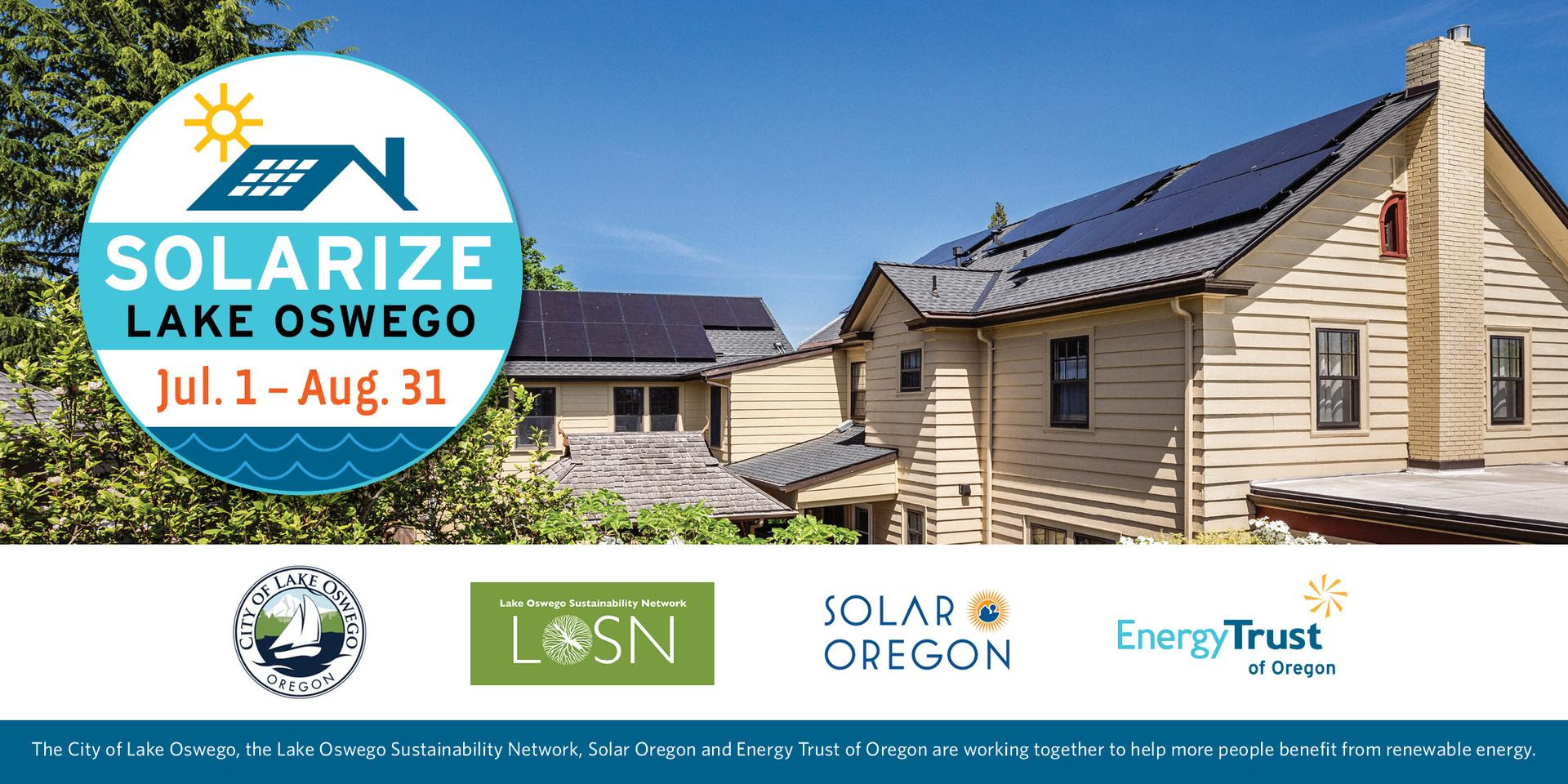
The roll back for federal support of clean energy signed into law in July 2025 included the end of the 30% tax credit for residential solar and home battery storage systems. If you want to obtain this Residential Clean Energy Credit you will need to have your residential solar and/or battery storage system installed and operational by December 31, 2025. Permits for solar systems take a couple of months to secure and many solar companies are reporting substantial demand. If you want to take advantage of this tax credit ACT NOW.
Get a bid from an Energy Trust of Oregon Allied Contractor through the ETO Solarize Lake Oswego webpage.
Get more information about solar at two free informational events in Lake Oswego.
|
|
|
Tuesday, July 29, 2025
12 – 1 pm
Online
|
|
Tuesday, August 19, 2025
6 – 7 pm
Lake Oswego Public Library
|
|
|
Why add solar to your home?
|
- You add clean energy to the grid.
- Oregon’s goal is to have investor-owned utilities reduce their greenhouse gas emissions by 80% by 2030. In 2024, PGE was only one third of the way to meeting that emission target. When Oregonians add solar they help meet this goal.
- You save money on your energy bills.
- The break-even point is reported between 8-14 years—after that you have paid off your system and your electricity is free. Residential solar systems usually last 25 years.
- Electricity prices continue to rise, so solar purchased now is a hedge against future electricity price increases.
- You add value to your home.
- A recent study showed residential solar increases the value of your home by an average of 6.9%.
- Homes with solar sell faster than those without solar.
- In Oregon, this increased value is exempt from property tax increase.
- If you add a battery system, you will be energy resilient.
- You will ensure that you have electricity during power outages.
|
|
|
Community Solar Works for Me – And Also Surprised Me
|
By Jim Newcomer, LOSN Volunteer
|
I’m a subscriber to community solar power, so I warn you that I’m writing with a bias: I love it. But wait, there’s more: I’m part of an experiment that could increase our nation’s vegetable supply. What?
First, here’s my experience with the program. About two years ago my wife and I, who rent our home, wanted to access electricity that was procured from clean, renewable sources that would produce few greenhouse gas emissions – that is, not from coal or natural gas. Since we could not erect solar panels on our landlord’s roof, we signed up for Community Solar Power through the Oregon Community Solar Project.
At first we were disappointed – all their available solar farms were fully subscribed, and we were put on a waiting list. After a couple of months, though, a new project opened near us, and they accepted us as a subscriber. Immediately we began to receive electricity from it…
|
|
|
Consult a coach from Electrify Oregon
|
|
|
Other federal tax incentives for clean energy for your home are going away soon. EV tax credits will expire on September 30. Home energy tax credits for heat pumps for heating and cooling your home and your hot water heater will end December 31, 2025. If you want to get some help figuring out how to bring clean energy into your home, find contractors, and get tax breaks and financial incentives, consider a free session with a coach from the nonprofit Electrify Oregon. LOSN is an allied organization of Electrify Oregon and several of the coaches live in Lake Oswego.
|
|
|

